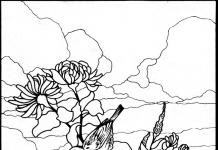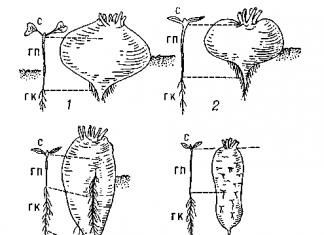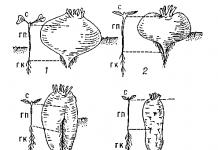When growing in a permanent place of the same crops, soil fatigue occurs. The soil becomes impoverished, diseases and pests develop on plants.
Crop rotation helps to combat soil fatigue, that is, growing crops at the same planting site after 3-4 years. If, after the main crops, green manure is sown, then the culture can be returned to the garden earlier. This is especially true in small garden plots, where 1-2 acres of land are used for vegetables.
Siderates - rye, oats (cereals), mustard, phacelia (green) grow quickly, their roots loosen the soil and improve its structure, suppress the growth of weeds. Bean green manures increase the nitrogen content in the soil, and mustard, lupine, and oats also suppress the development of many pathogenic microorganisms that cause plant diseases.

Phacelia tansy - honey plant, beautiful flower, wonderful siderate
When to plant? We sow green manure in accordance with the gardener's calendar. After harvesting early ripe vegetables - onions, garlic, early cabbage, radishes, you can sow green manure beans - peas, spring vetch, beans, lupins or cruciferous - white mustard, oil radish. After crushing the green mass, we plant it in the soil in the fall before frost. The last date for sowing is the first decade of August.
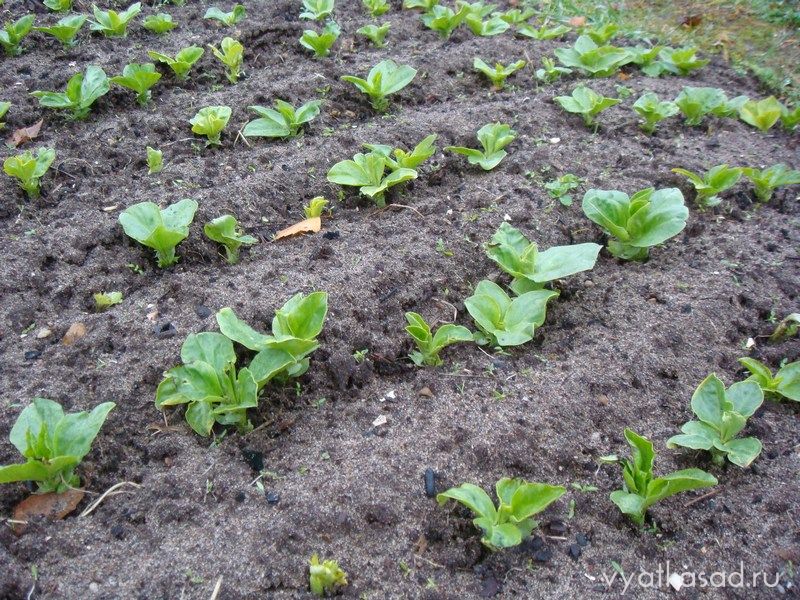
Beans - fast growing green manure
After harvesting mid-season crops - potatoes, carrots, beets are sown with winter rye. The green mass is embedded in the soil in the spring of next year. After harvesting tomatoes in a greenhouse, it is also a good idea to sow green manure to improve the land.

The total length of winter rye roots is more than 600 km. They loosen the soil, improving its structure
In early spring, legume-cereal mixtures (a mixture of peas and oats) are sown. This is done when some piece of land is "allowed to rest." They develop slowly and are difficult to resist weeds at first. The green mass of these crops is cut off and used as mulching material in cultural plantings or laid in.
To Bury or Not to Bury? Many sources deny the incorporation of green manure into the soil, more and more adherents of organic farming appear. There is experience in growing green manure in the aisles: they are cut off when the plants in the beds grow up. The green manure stems and leaves will dry on the surface, acting as mulch for a short time, and the roots will be digested by the microcosm, which means the soil composition will improve.
In my opinion, in order to improve the composition, structure of the soil and combat soil fatigue, it is still better to grind green manure and lightly cover it with earth. Usually in the spring there is no trace of the introduced vegetation, all of it overheats. How are you doing?
So, the harvest is harvested, the weeds and the remains of plant crops are removed, the land in the garden remains empty. Should it be left alone until spring? We offer a solution that will help enrich the soil on your site beneficial substances and reduce weed growth for the next season.
Recently, it has become very common to sow empty plots in vegetable gardens with green manure plants. We will consider what kind of plants they are, why they are needed, and the best way to sow a garden in the fall in order to increase the yield for next year.
From the article you will learn:
- 1 A few words about what green manure is
- 2 What plants can be called green manure
- 3 When to sow green manure
- 4 Rules for the successful use of green manure
- 5 Conclusion:
- 6 Interesting video on this topic
- 7 See also:
- 8 We also recommend reading:
A few words about what siderates are
Siderates are plants that are actually living fertilizers. They help increase productivity. Experienced gardeners sow them after harvesting at the end of August,

green manure
in autumn or early spring before planting the main crops in the ground. Siderates are allowed to grow, and then plowed into the ground. This must be done before flowering, because young plants decompose faster.
In the process of decomposition, green manure enrich the soil with various micro and macro elements, such as nitrogen, phosphorus, potassium, etc. In this case, among other things, beneficial soil microorganisms are activated. But it is important to keep in mind that the amount of greens should not be too large, otherwise it will not overheat, but will turn sour.
What plants can be called green manure
Green manure includes rye, white mustard, peas, buckwheat, fodder beans, alfalfa and even corn with sunflowers. Weeds such as nettles can also be called green manure: if nettles are mowed before flowering and
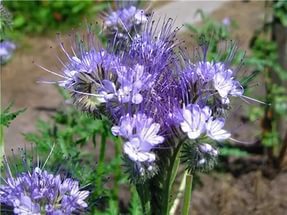
Phacelia is a summer resident's assistant and an excellent green manure.
introduced into the soil, it will not only become a fertilizer, it will also scare away slugs with snails from plantings.
Have you heard the opinion that rape depletes the earth? With industrial cultivation, this is also possible, but if you plant it as a green manure, but mow it in time, and introduce it into the soil, then this destroyer of nutrients will turn into an organic fertilizer, bringing phosphorus and potassium to the ground.
In general, many agronomists claim that each plant can be used as green manure. The main thing is to sow it in time and plant it in the soil. In this case, it is important to remember that green manure must get into the ground young. For example, if you sow corn or sunflower as green manure, then it is important not only not to bring it to flowering, but also not to let the plants harden, otherwise, when plowing, you simply cannot kill them.
When to sow green manure
Usually green manure is sown either in early spring (before planting crops) or immediately after harvest (second half of August, September, until mid-October). Planted in the spring give a little undergrowth and close up in the soil a week or two before planting. Green manure planted in August and early autumn (peas, beans, sunflower, sweet clover, corn, alfalfa, lupine) are plowed up or left before winter (rye, mustard, buckwheat, rapeseed).
By the way, if you sow buckwheat in the garden for the winter under potatoes, next year you will save planting from such
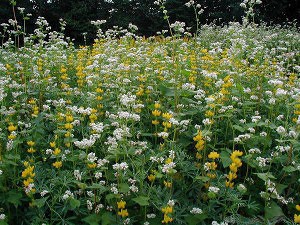
buckwheat and lupine
attack like a porsha. If you use rye, the earth will be enriched with nitrogen, rape - potassium and phosphorus. Wheat is also sown under potatoes for the winter.
These plants can be planted from early September to mid-October. Therefore, if you were unable to sow the empty plots of the garden earlier and are thinking about the best way to sow the garden in the fall before winter, choose buckwheat, rye or other cereals. They will not only serve organic fertilizers, but also keep snow from weathering from the garden in winter.
For landing times, check the weather. Plants need to catch more or less warm nights, otherwise they will not have time to sprout and grow.
You can generally alternate planting green manure: plant one, for example, corn, mustard or peas immediately after harvest, for example, in July or August. Mow this thing when it grows up, plant it in the soil, and then sow rye or buckwheat in this place. Thus you will spend the present complex fertilizer soil organically.
Rules for the successful use of green manure
When deciding what is the best way to sow a garden in the fall, it is important to remember the following rules for the use of green manure plants:
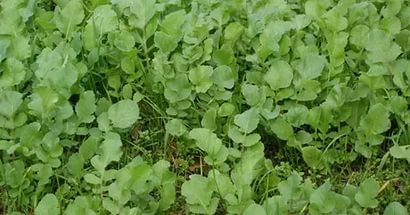
oil radish. unique green manure
Conclusion:
Deciding to sow the garden in autumn with green manure plants, as a result we will get a fertilizer of organic origin, which:
- saturate the soil with useful substances no worse than manure;
- will help us fight pests of root crops;
- reduce the acidity of the soil;
- slow down the invasion of weeds;
- loosens heavy soils;
- retain moisture in sandy soils.
Siderates are gradually replacing expensive mineral fertilizers and manure. Fertilizers oxidize the soil, and along with manure, pest larvae and undigested weed seeds get into the garden. Green manure for the garden allows you to almost completely abandon the use of fertilizers, they enrich the soil with organic matter, various trace elements, help restore the neutral pH of the soil, stimulate the activity of soil microorganisms and improve its structure.
In order to carry out sideration of the site, it is necessary to sow special plants on it. First you will have to purchase the seeds of these crops, and then you can learn how to get them yourself. To choose the right useful plants for a garden, you need to take into account some characteristics that they should have:
- obtaining seeds from crops for sowing at home;
- resistance to low temperatures, unpretentiousness;
- indicators of high germination and intensive growth of green mass.
What plants are best suited as green manure
Green manure crops must be chosen very carefully, while taking into account the pH of the soil in your area. Most green manure crops grow in neutral or slightly acidic soils. Therefore, if the soil in the garden is acidic, then first it must be limed. Not all cultures have the necessary characteristics. The following plants are considered the most suitable.
fodder beans
This culture ranks first in useful properties and ease of cultivation. Seeds germinate at a temperature of +3 degrees, which allows you to sow the garden very early. Seedlings tolerate short-term frosts down to -6 degrees well, so plants are suitable for growing in almost any climatic zone of our country.
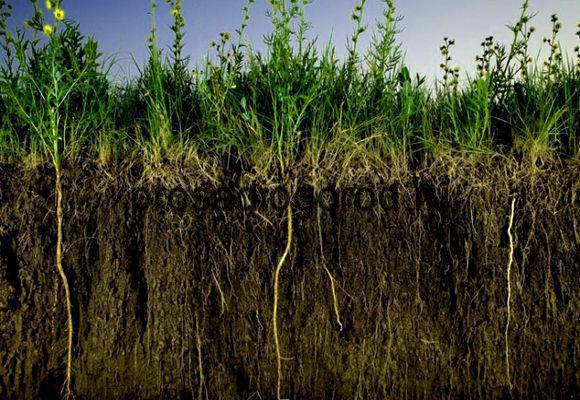
The vegetative mass continues to grow until the temperature drops below +7 degrees. It is better to sow beans in the spring on slightly acidic and neutral soils. The root system of the beans is of the tap type, the root can penetrate into the deep layers of the soil, which helps to increase its drainage properties.
In addition, nitrogen-fixing bacteria are located on the roots of legumes, which contribute to the accumulation of this element in the soil. Therefore, after sowing beans, the yield of many crops increases, and the land becomes more fertile. Beans are also sown in areas under fruit trees. When autumn comes, it is necessary to mow the stems of plants and plow them into the soil. Thus, the green mass of the plant will decompose, enriching the soil with organic matter, and the roots of plants with nitrogen-fixing bacteria will remain for the trees.
leafy mustard
This culture can also be used as green manure. Plants give friendly shoots even at low temperatures - +3 degrees. In Central Russia, this allows you to start sowing as early as March. In addition, the shoots have good resistance to short-term frosts down to -3 degrees. Mustard is well suited for sowing tomatoes or cucumbers in a greenhouse. To do this, in the spring, the seeds are sown in a greenhouse, and about a month after germination, the crop is planted in the soil. Two weeks later, the planting of tomato seedlings begins. According to the same technology, mustard is sown in the garden. If you sow in July, then by October the plants will give about 300 grams of roots and up to 1 kg of green mass.
Lupine
This crop can grow well even on sandy soils, which are considered infertile. Lupine is resistant to light frosts, so it is suitable for early seeding. The root system of lupine is able to extract hard-to-reach phosphorus from the soil and enrich the soil with nitrogen. Lupine seeds have a very hard peel, so in order for the seedlings to be more friendly, you need to run sandpaper over them, or double the seeding rate. Lupine is a perennial crop and can be cultivated in the garden for up to 8 years. The green mass is mowed annually and embedded in the soil. Lupine can be used to make green manure fallow in the garden so that the earth rests and restores the balance of substances.
Peas
This plant belongs to the legume family. It can be successfully used as a green manure crop. It is good to sow peas, for example, to potatoes. It is better to use this crop as a ground cover for fruit trees and shrubs. In the roots of peas, as well as beans, nitrogen-fixing bacteria live, accumulating this element. And the green mass mixed with the soil will improve its structure and aeration.
In addition to overseeding green manure crops to the main plants, they can be used as fallow. When, apart from green manure, the plot is not sown with anything else. If it is not possible to make a complete steam area, then small areas can be allocated annually for fallow.
Throughout the season, gardeners are constantly fighting with weeds. With amazing vitality, grass grows wherever possible, causing a lot of trouble.
There are many methods for weed control. One of them that deserves close attention is the cultivation of plants that suppress the growth of weeds and improve soil fertility. These nursery plants make gardening easier by being a natural weed killer, as opposed to herbicides or other methods.
Siderates on guard
Siderates are commonly called green plants that suppress the viability of weeds. In addition, they are bred to enrich the soil and crop rotation. The use of green manure refers to an unconventional method of removing weeds. But he found wide application in all corners of the earth, falling in love with many gardeners.
The essence of their impact is quite simple:
- Siderat is planted on a piece of land that needs to be cleaned from harmful grass.
- Subsequently mowed for compost or mulch.
- It rots on the ground, enriching it with useful substances.
Benefits of green fertilizers:
- thanks to them, it is not necessary to buy and use mineral fertilizers, since they already fertilize the soil;
- reanimate oxidized soil;
- restore the soil composition;
- loosen the soil;
- stimulate the soil;
- destroy harmful bacteria;
- reduce the development of weeds.
Siderates of the legume family
It is considered the most common unpretentious culture, which includes up to 20 thousand species. Consists of annuals and perennials, growing well in medium conditions. Forage and food beans are planted everywhere, mainly alfalfa, clover, peas and beans. They are planted in early March, and the crop can be harvested until the temperature drops below zero degrees. Their roots contain nitrogen-fixing bacteria that favorably affect the soil.
Forage legumes
In order to enrich clay or marsh soil, it is preferable to seed a weed garden with these green savers.
They have certain features:
- reduce the acidity of the earth, normalizing its composition;
- convert phosphorus compounds into the desired form;
- resistant to small frosts;
- contain many minerals.
It is a robust plant with large roots reaching several meters deep. It is used against the wireworm weed. It is planted in the garden in the last days of August, left for the winter, and the greens are cut in the spring.

Sainfoin.
The plant, so fond of the bees, also has a green manure characteristic. Grows in hard, rocky soil. Having elongated ten-meter rhizomes, it produces soil drainage, and also supplies the earth's surface with useful substances taken from the bowels of the earth. It is resistant to heat and cold.

It also has high green manure properties. They need to plant a garden so that weeds do not grow. This plant grows rapidly, making it impossible for weeds to become active and prevent a good harvest. It is sown at the end of the season, and by the autumn months it is already building up a lot of greenery.
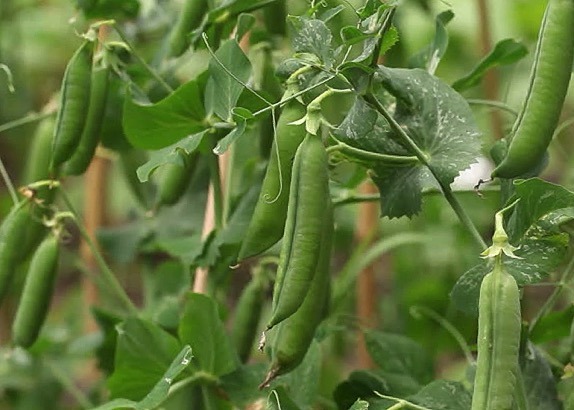
An annual called vetch is planted in early spring on tomato beds. It grows well, suppresses weeds, loosens the soil. Vika is cut two weeks before planting tomato seedlings.

Abandoned plots of land are sown with lupine. He feels great on any soil, significantly develops its fertility and is a good predecessor for strawberries.
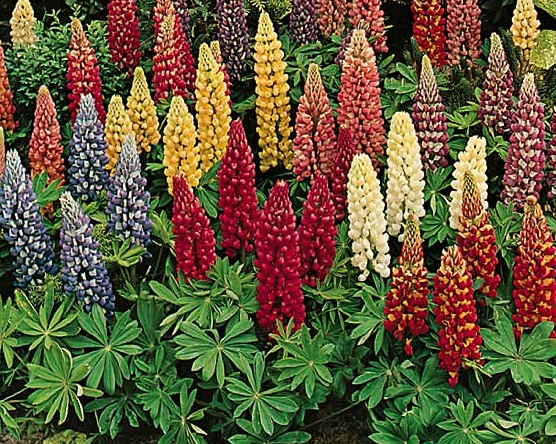
Planting alfalfa in moist, neutral soil is a good idea to keep those weeds from growing. It belongs to perennials, which significantly increase the fertility of the earth, enriching it with the necessary substances.
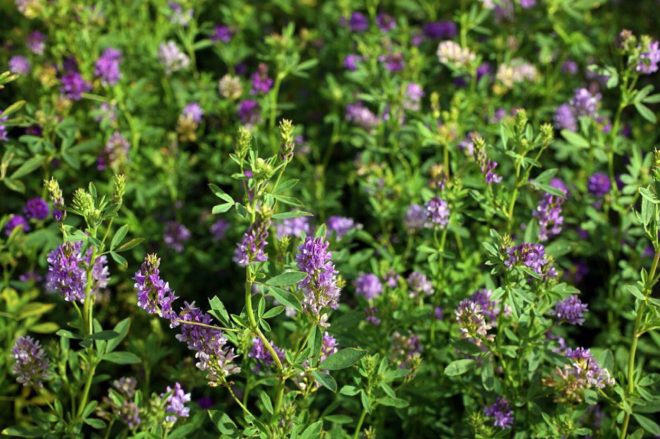
Saradella
Saradella is loved for the fact that in one season it produces a double crop of green mass. It loves moisture, but also grows in poor soil if it is constantly watered. Tolerates light frost well.
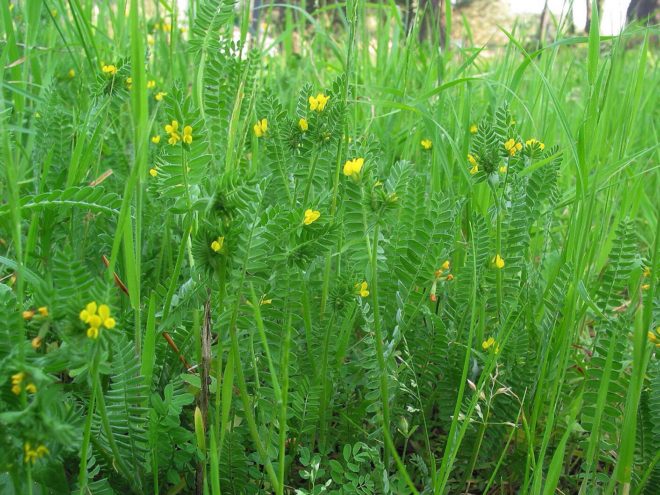
cruciferous family
This family is quite unpretentious and hardy, and the bacteria produced by their roots drive away harmful insects and weaken the development of late blight.
white mustard
- inhibits the development of weeds;
- relieves codling moth, slugs;
- forms humus from green mass;
- loosens, drains the soil;
- retains nitrogen;
- forms mulch;
- is a good honey plant.
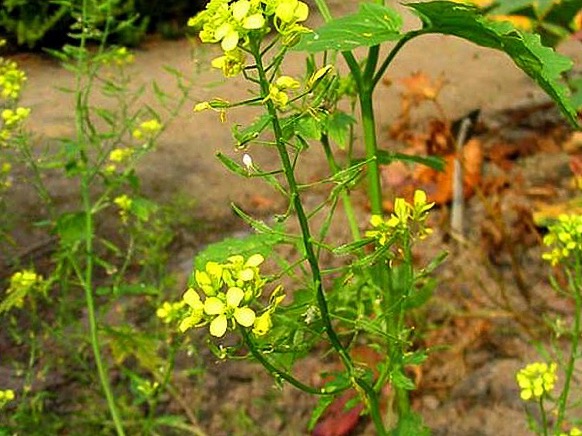
Sowing rape favorably affects the nutrition and enrichment of the soil. The presence of long roots helps it draw mixtures of minerals from the depths of the earth. Resistant to low temperatures, quickly gaining green mass.

oil radish
Siderat in the form of oil radish does an excellent job with wheatgrass. It is an unpretentious plant that does not respond to dry or cold weather. A strong root system helps it adapt to different conditions a habitat. Late planting of radish does not harm the set of significant green mass.
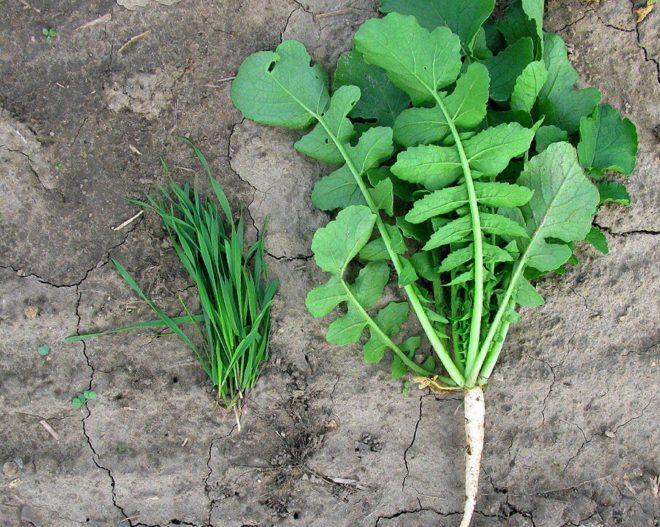
Not all plants have green manure properties. But cultures with this feature make it easy to replace chemistry. They can sow any garden plots all season, alternately using the free area. And cut grass goes into business like compost. amazing plants make it very easy to care for the garden, for which they are recognized by many gardeners and gardeners.










